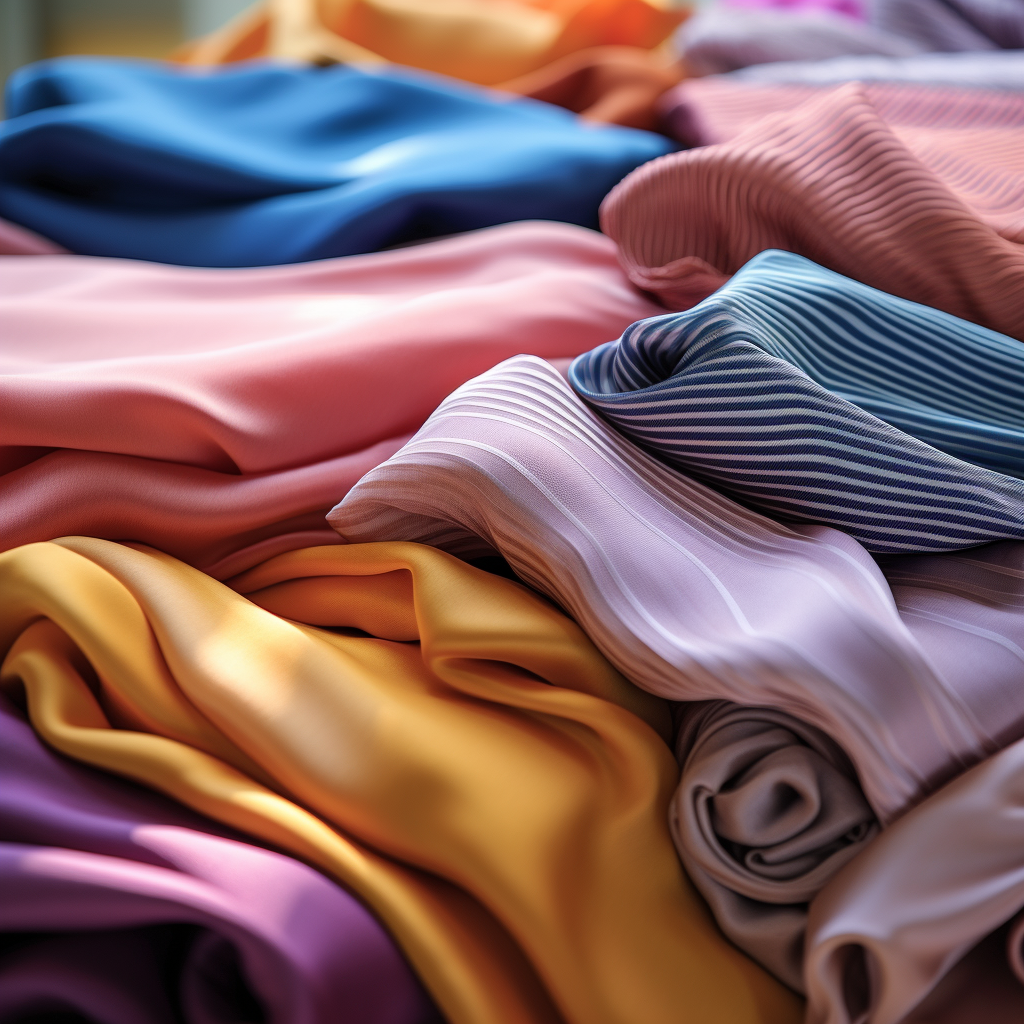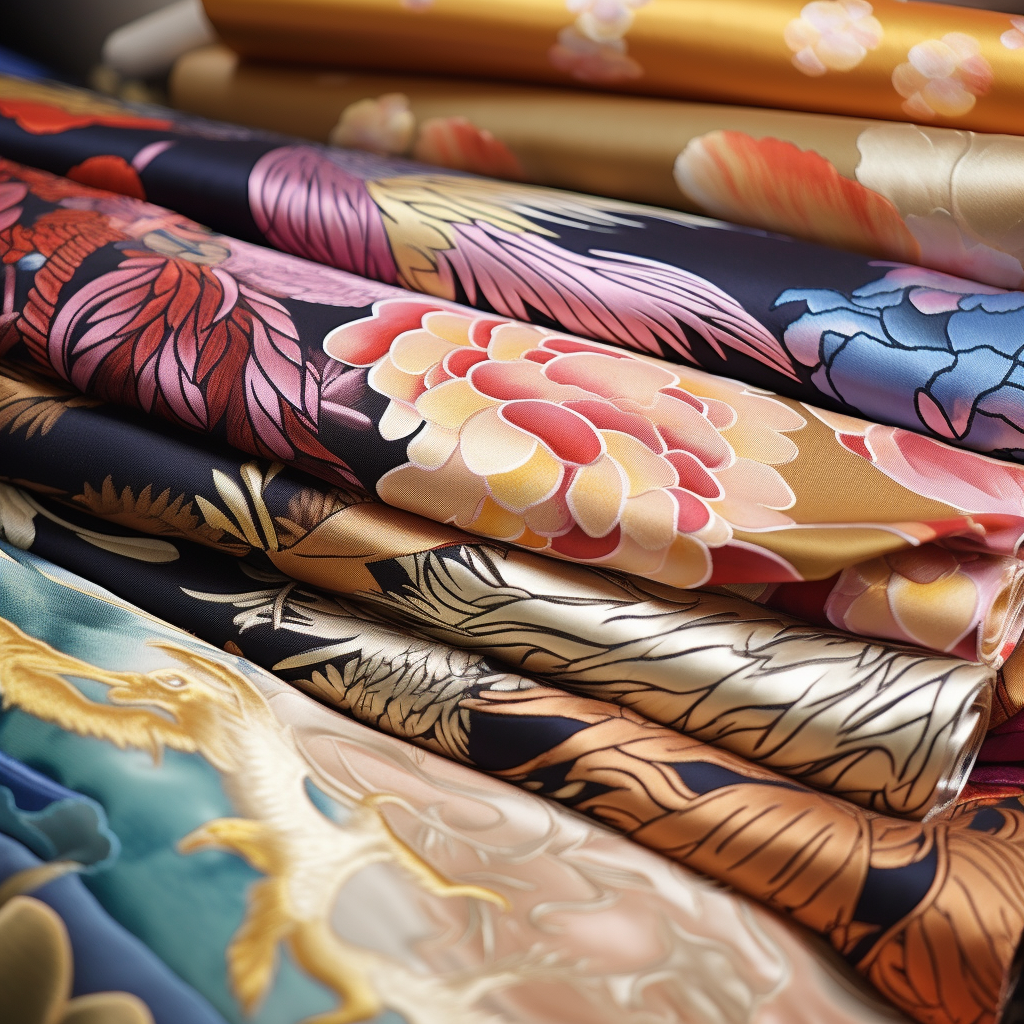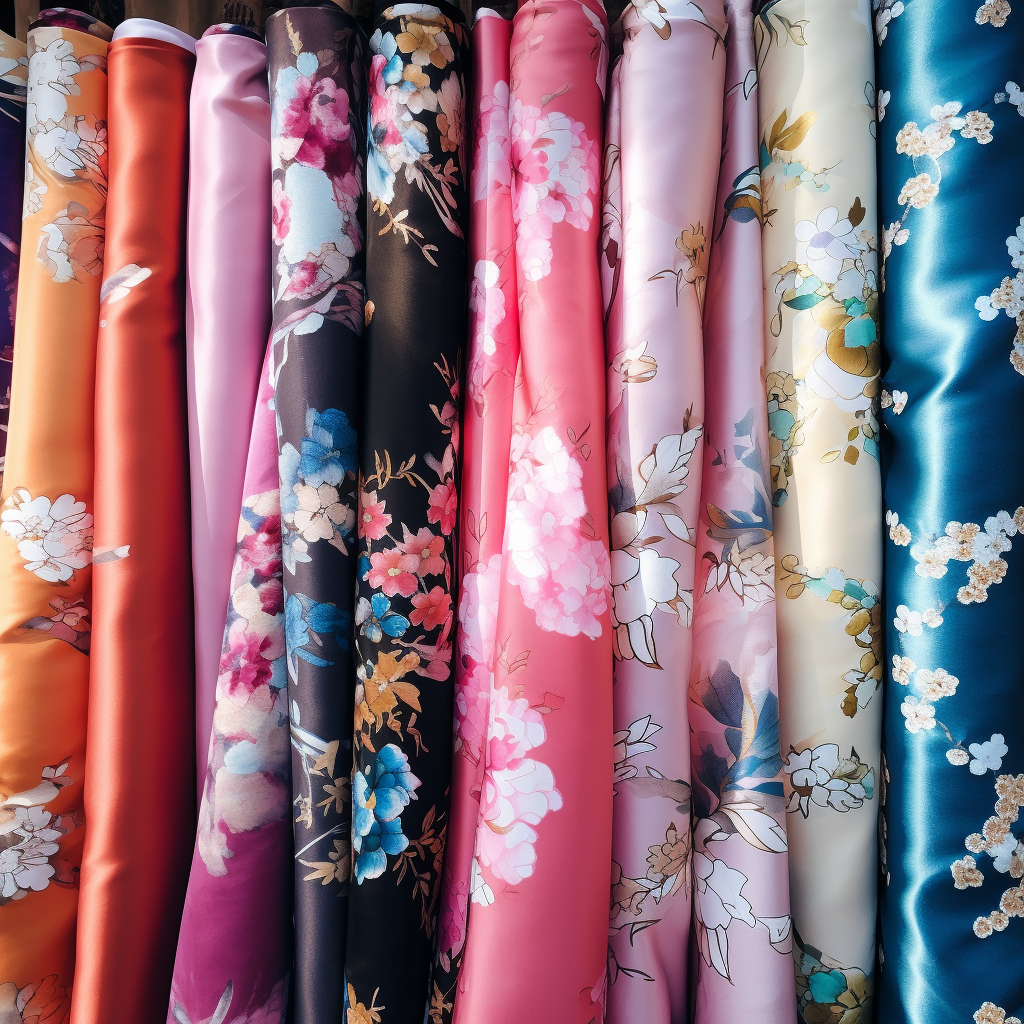Why Sourcing Fabric from China Matters
In the fashion and textile industry, sourcing high-quality, cost-effective fabric is pivotal for a brand’s success. China, with its gargantuan manufacturing capabilities, often emerges as a go-to destination. Yet, for many, the Chinese market remains an enigma, a puzzle that’s both enticing and intimidating.
The Scope of the Article
This article aims to be your comprehensive guide on sourcing fabric from China. We will explore various facets, including the landscape of the Chinese textile industry, quality standards, legal considerations, financial factors, and even ethical implications. Each chapter is designed to offer you in-depth information, backed by real data and case studies, to make your sourcing journey smooth and effective.
Who Should Read This Article?
If you’re a designer, a sourcing manager, or simply an entrepreneur considering sourcing fabric from China, this article is for you. Even if you’ve had some experience in this arena, you’ll find nuggets of wisdom that could save you time, money, and potential legal headaches.
Understanding the Chinese Textile Industry
Scale and Scope
The Chinese textile industry is a behemoth, contributing significantly to the country’s GDP. It’s estimated that China produces roughly 35% of the world’s textiles. With over 10,000 textile manufacturing units and a workforce of millions, the sector’s scale is unparalleled.
Key Statistics
| Category | Data Point | Source |
|---|---|---|
| Global Market Share | ~35% | WTO |
| Number of Factories | >10,000 | CNTAC |
| Annual Revenue | $450 Billion | Statista |
Types of Fabric
China offers an expansive variety of fabrics, from natural fibers like cotton, silk, and wool to synthetic ones like polyester and nylon. The versatility is one of China’s standout features as a sourcing destination.
Types of Chinese Fabrics
| Type of Fabric | Ideal Usage | Region Specializing |
|---|---|---|
| Cotton | Apparel, Home Textiles | Xinjiang, Shandong |
| Silk | Luxury Clothing | Hangzhou, Suzhou |
| Wool | Winter Wear | Inner Mongolia |
| Polyester | Sportswear, Uniforms | Zhejiang, Jiangsu |
What This Means for You
Understanding the sheer scale and variety of China’s textile industry can help you tailor your sourcing strategies. Whether you’re looking for bulk quantities or specialized fabrics, chances are China has a supplier that fits your needs.

Important Takeaways
- China dominates the global textile market, making it a crucial player in the supply chain.
- The diversity in fabric types provides ample options for businesses with varying needs.
- Due diligence is essential to match your sourcing requirements with the right supplier.
Pros and Cons of Sourcing Fabric from China
In this chapter, we explore the advantages and disadvantages of sourcing fabric from China. Understanding both sides of the coin will help you make a more informed decision.
Advantages
- Cost-Effectiveness: Economies of scale and lower labor costs translate to affordable pricing for various types of fabric.
- Quality: China’s advanced manufacturing technologies can yield high-quality fabric that meets international standards.
- Versatility: The variety of fabric types available makes it a one-stop-shop for most sourcing needs.
- Lead Time: Large scale production capabilities often result in shorter lead times, which can be crucial for seasonal fashion cycles.
- Customization: Many Chinese suppliers offer customization options that can be invaluable for niche or specialty brands.
Advantages at a Glance
| Advantages | Brief Description |
|---|---|
| Cost-Effectiveness | Economical pricing due to large-scale production |
| Quality | Advanced manufacturing technologies |
| Versatility | Wide variety of fabric types |
| Lead Time | Shorter production cycles |
| Customization | Flexibility in meeting specific requirements |
Disadvantages
- Language Barrier: Communication can be a hurdle, especially if you don’t speak Mandarin.
- Quality Inconsistency: Some suppliers may compromise on quality to offer lower prices.
- Logistical Challenges: Transporting goods internationally can be complex and costly.
- Intellectual Property Concerns: Imitation and copyright infringements are not uncommon.
- Ethical Considerations: Labor and environmental practices may not meet Western standards.
Disadvantages at a Glance
| Disadvantages | Brief Description |
|---|---|
| Language Barrier | Potential communication issues |
| Quality Inconsistency | Possible compromise on quality |
| Logistical Challenges | Complexity in international transportation |
| Intellectual Property | Risk of copyright infringement |
| Ethical Concerns | Potential for non-compliance with labor and environmental standards |
Balancing Act
Sourcing fabric from China is not a one-size-fits-all solution. It’s essential to weigh the pros and cons and match them against your specific business needs and ethical considerations. Your ability to navigate these factors effectively will be a significant determinant of your sourcing venture’s success.

Navigating Quality Standards
Quality assurance is paramount in the textile industry, and this holds especially true when sourcing fabric from abroad. In this chapter, we focus on the certification systems, international standards, and best practices to ensure that the fabric you source meets your quality criteria.
Quality Certification Systems
China has a rigorous quality certification system, often indicated by specific marks or labels on the product. The most common certifications to look out for include:
- CQC (China Quality Certification): A general certification indicating that the product meets the national standards of China.
- OEKO-TEX® Standard 100: Indicates that the fabric is tested for harmful substances and is safe for human use.
- ISO 9001: This is an international standard for quality management systems across various industries.
Common Quality Certifications
| Certification | Description |
|---|---|
| CQC | Conforms to national Chinese standards |
| OEKO-TEX® 100 | Tested for harmful substances |
| ISO 9001 | International standard for quality management |
Compliance with International Standards
It’s vital to ensure that the fabric you source is compliant with international quality standards, especially if you plan to export your finished products. Many Chinese suppliers offer products that meet European or American standards, but this should be explicitly confirmed during the negotiation process.
On-Site Inspections
While certifications provide some level of assurance, there’s no substitute for on-site inspections. These inspections allow you to verify the manufacturing process, quality control measures, and even the working conditions of the factory.
Important Takeaways
- Always request for, and verify, quality certifications from the supplier.
- Consider third-party audits or inspections for an unbiased view on quality standards.
- Keep an eye on international compliance, especially if your target market has stringent quality norms.
By being meticulous in your approach to quality standards, you not only safeguard your investment but also build a foundation for a reliable, long-term relationship with your supplier.
Legal Considerations
Ignoring legal requirements can lead to severe complications, ranging from shipment delays to hefty fines and legal battles. In this chapter, we discuss intellectual property rights, as well as import and export regulations you should consider when sourcing fabric from China.
Intellectual Property Rights (IPR)
China’s legal system has made strides in improving intellectual property rights protections, but risks still exist. Make sure to:
- Register Trademarks and Patents: If you have unique designs or trademarks, register them in China. Don’t assume your international patents will protect you.
- Non-Disclosure Agreements (NDAs): These can offer some protection for your designs and business strategy.
- Legal Counsel: Consult legal professionals experienced in Chinese law for drafting contracts and legal documents.
| IPR Protection Steps | Description |
|---|---|
| Register IPR | Protect your unique designs and trademarks by registering them in China |
| Use NDAs | Utilize non-disclosure agreements to safeguard your intellectual property |
| Legal Counsel | Employ professional legal advice for drafting contracts and other documents |
Import/Export Regulations
Customs laws and import/export regulations can be quite stringent. Here’s what you need to be aware of:
- Harmonized System Codes (HS Codes): Knowing the correct HS Codes for your fabric can streamline the customs process.
- Customs Duties and Taxes: Be prepared for import duties, taxes, and other fees associated with international shipping.
- Documentation: Ensure you have all the required documents, such as bills of lading, invoices, and certificates of origin, to avoid delays.
- Compliance Checks: Make sure the fabric meets the quality and safety standards required in your home country to avoid confiscation or fines.
| Import/Export Key Points | Description |
|---|---|
| HS Codes | Utilize the correct codes for an efficient customs process |
| Duties and Taxes | Be prepared for additional costs |
| Documentation | Keep all essential documents handy |
| Compliance | Ensure the sourced fabric meets the regulations and standards of your country |
Important Takeaways
- Never underestimate the importance of safeguarding your intellectual property.
- Be vigilant about compliance with both Chinese and home-country regulations.
- Utilize professional legal advice to navigate the complex legal landscape of international sourcing.
Failing to adhere to legal considerations can unravel even the most promising sourcing venture. Being proactive in your approach towards understanding and complying with legal norms is non-negotiable.
Financial Factors
Financial planning is crucial for any business operation, and sourcing fabric from China is no exception. In this chapter, we’ll examine the key financial considerations, such as costing and pricing, as well as payment modes and terms.
Costing and Pricing
Understanding the full spectrum of costs involved in sourcing fabric is essential. Here’s a breakdown:
- Per Unit Cost: The price of the fabric per meter or yard.
- Shipping Costs: These can vary based on volume, distance, and shipping method.
- Customs Duties and Taxes: Import fees that vary by country and fabric type.
- Quality Control: Budget for inspections, tests, and potential third-party audits.
| Cost Categories | Description |
|---|---|
| Per Unit Cost | Price of fabric per meter or yard |
| Shipping Costs | Fees associated with transportation |
| Customs and Taxes | Import fees specific to each country |
| Quality Control | Costs for inspections, tests, and audits |
Payment Modes and Terms
Payment terms can range from upfront payments to net terms, and each has its pros and cons. Familiarize yourself with the following:
- Letter of Credit: This involves a bank guaranteeing payment, offering security to both parties.
- T/T (Telegraphic Transfer): A standard wire transfer, usually requiring a 30-50% deposit.
- Open Account: A riskier option where payment is made after product delivery.
| Payment Modes | Description |
|---|---|
| Letter of Credit | Bank-guaranteed payment offering security |
| T/T | Standard wire transfer with deposit |
| Open Account | Riskier, payment after product delivery |
Important Takeaways
- Full understanding of costs ensures there are no financial surprises along the way.
- Choose payment methods that balance both security and flexibility for both parties.
- Always consider currency exchange rates and their potential fluctuation.
By grasping the financial aspects fully, you can develop a robust sourcing strategy that not only meets your quality requirements but also aligns with your budget constraints.

Environmental and Social Responsibility
With consumers becoming more conscious about sustainability and ethical practices, it’s essential for businesses to consider these aspects when sourcing fabrics. In this chapter, we will explore the environmental and social responsibility factors in sourcing fabric from China.
Environmental Considerations
- Eco-Friendly Materials: Look for suppliers that offer organic or recycled fabrics.
- Sustainable Practices: Consider factories that use renewable energy and water recycling systems.
- Certifications: Watch for environmental certifications like ISO 14001 or the Global Organic Textile Standard (GOTS).
| Environmental Factors | Description |
|---|---|
| Eco-Friendly Materials | Organic or recycled fabrics |
| Sustainable Practices | Usage of renewable energy, water recycling |
| Certifications | ISO 14001, GOTS, etc. |
Social Responsibility
- Fair Labor Practices: Ensure that the factory adheres to fair labor practices and doesn’t exploit workers.
- Community Engagement: Some factories invest in local communities, which can be a positive signal.
- Transparency: Factories that are transparent about their operations are generally more trustworthy.
| Social Responsibility Factors | Description |
|---|---|
| Fair Labor Practices | No exploitation of labor |
| Community Engagement | Investment in local communities |
| Transparency | Openness about operational practices |
Important Takeaways
- The rise in consumer awareness makes environmental and social responsibility vital for brand image.
- A proactive approach to sustainability and ethical practices can offer a competitive edge.
- Due diligence in these areas is not just morally sound but increasingly a business imperative.
By giving due weightage to environmental and social factors, you not only meet emerging market demands but also contribute positively to broader sustainability goals.
